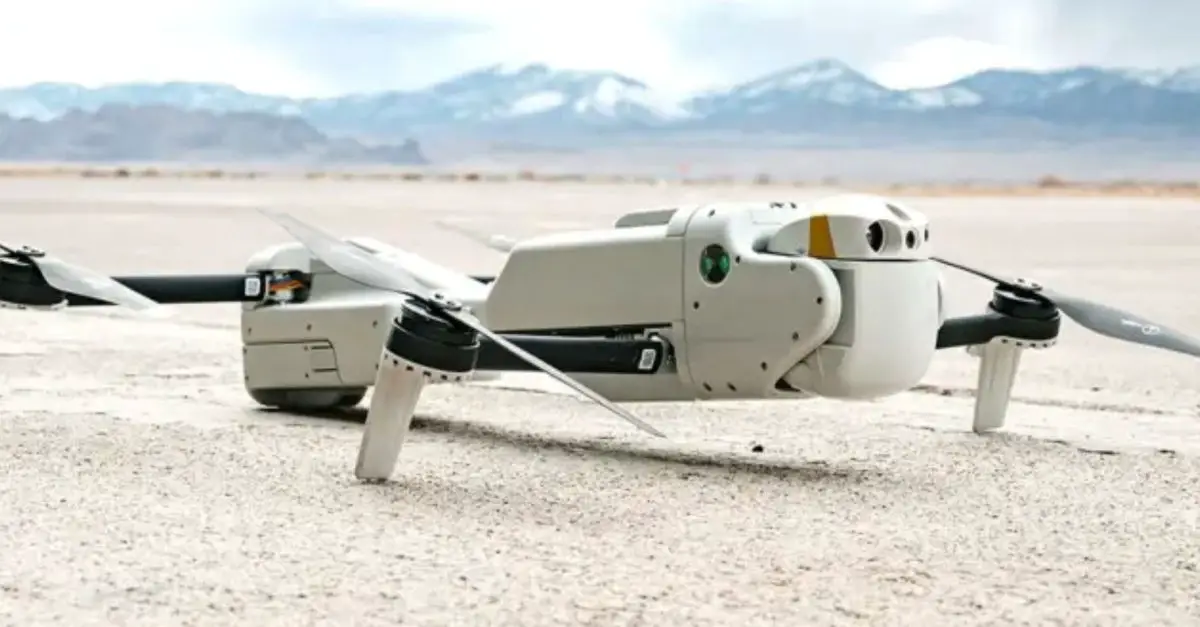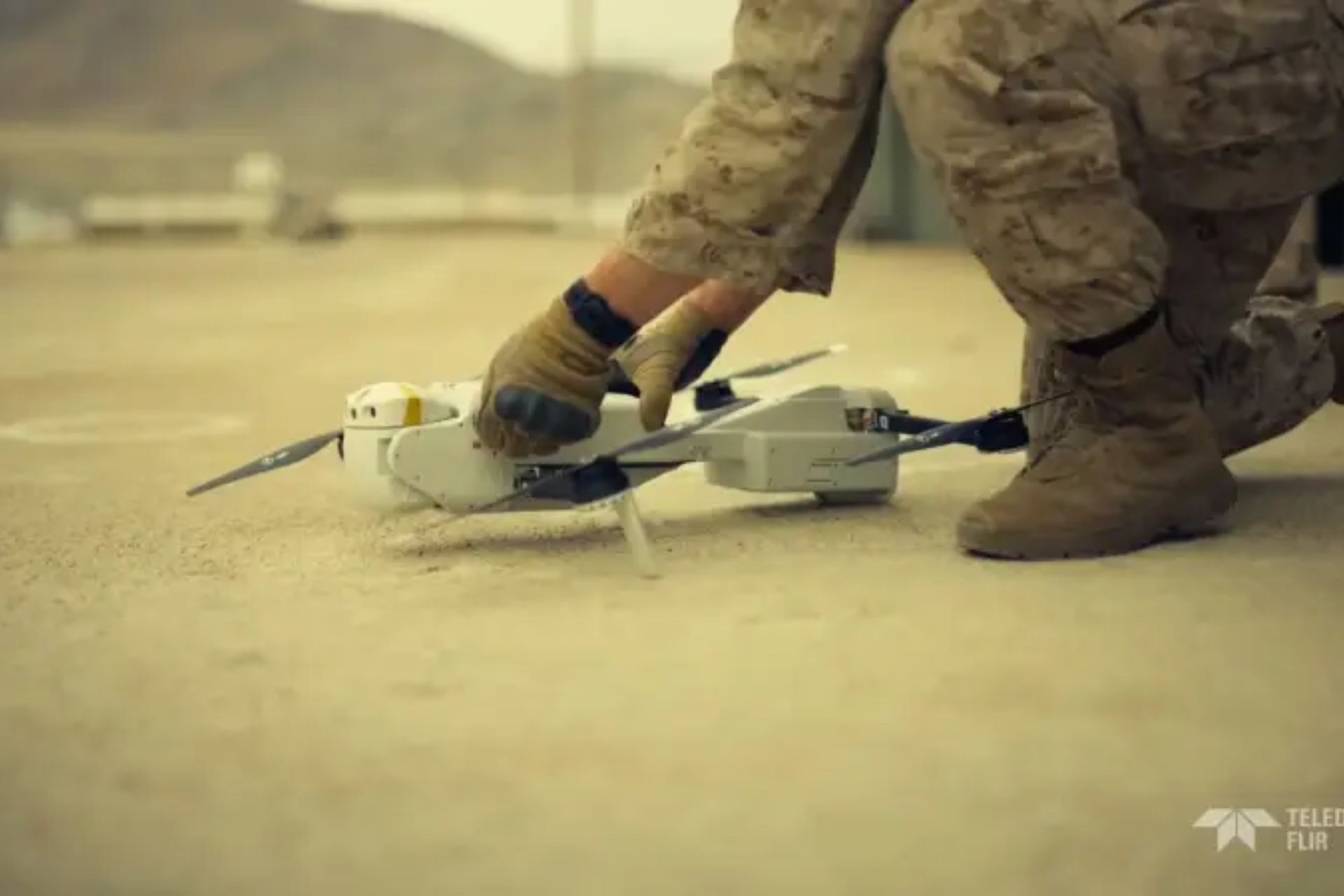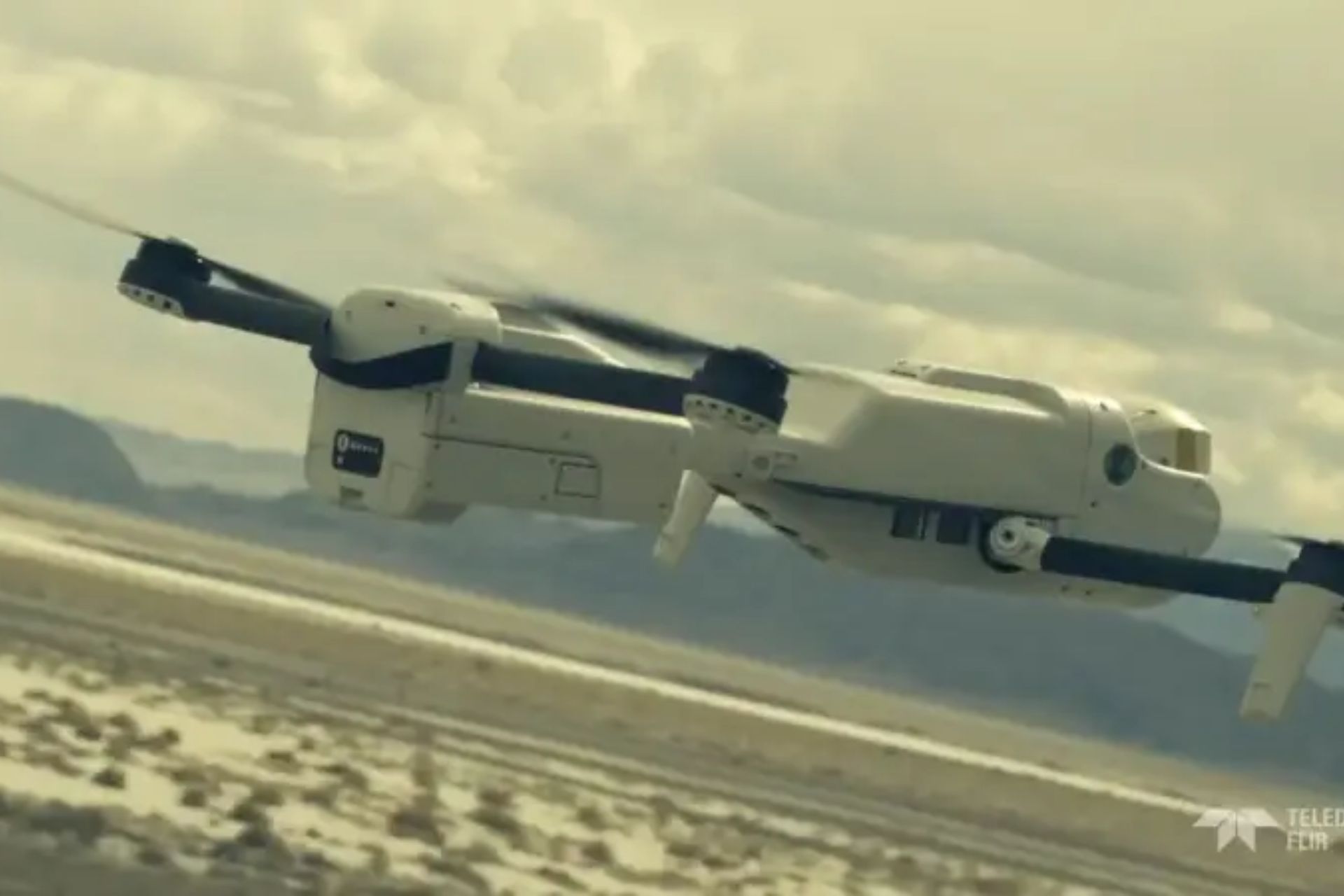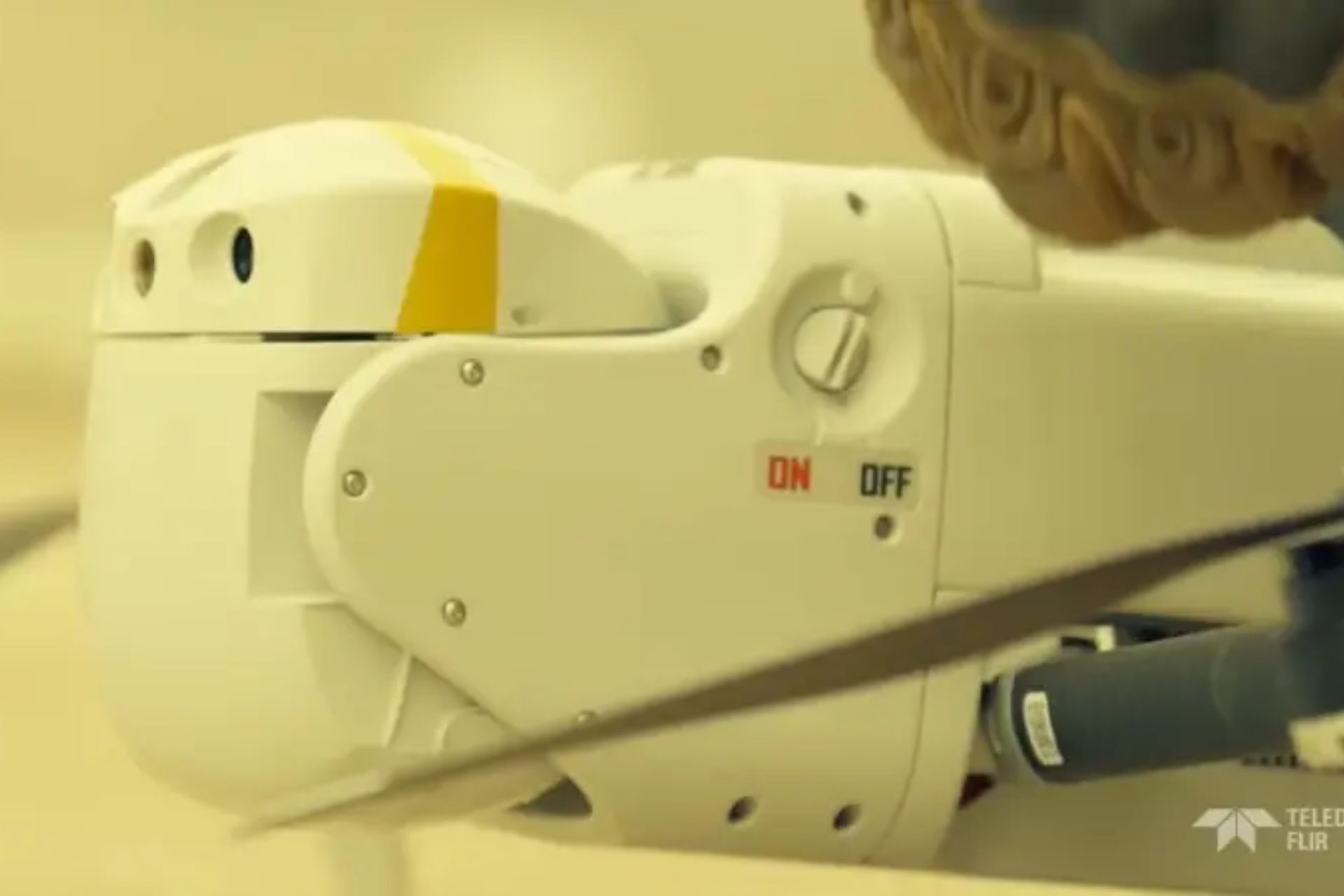Breaking News
USMC to receive Teledyne Rogue 1 loitering munition to strengthen its deployed units.
The United States Marine Corps plans to expand the combat capabilities of rifle units through the development and adoption of lightweight munitions. Several similar products are currently in development, and the first of these is ready for testing. Teledyne FLIR Defense is offering a drone called Rogue 1, which is currently being tested by the Marine Corps to allow for a comparison with its main competitors.
Follow Army Recognition on Google News at this link

Rogue-1 ready for take off (Picture source: Teledyne FLIR)
The US Marine Corps has been interested in loitering munitions (LOA) for some time and has been evaluating available samples and proposals on the market. Additionally, not long ago, they decided to launch their own development programs for such weapons. As a result of this program, they aim to acquire a range of armored vehicles with different characteristics and capabilities to equip rifle units.
In September 2023, the OPF-L (Organic Precision Fires-Light) program was launched. Its objective is to develop a compact and lightweight drone suitable for mass production and use in modern combat. Commercial organizations with the necessary experience were invited to participate in the program. It was reported that the new program could take up to eight years in total. In the near future, they plan to develop a new technology and conduct initial tests in 2024. Over time, they plan to carry out various studies, address application issues, and so on. The project's budget is capped at $249 million for the entire manufacturing, testing, and commissioning process.
Teledyne FLIR Defense, AeroVironment, and Anduril Industries expressed interest in developing new munitions. Their preliminary designs received the necessary evaluation, and on April 11, 2024, the ILC System Command gave them the order to proceed with development. They were then required, if necessary, to complete the development of new nuclear warheads and produce equipment batches for testing. In April, the Marine Corps did not specify the cost of the contracts or their timelines. However, AeroVironment announced it would receive approximately $9 million. It is likely that the other two companies received similar contracts.

Flight preparation of Rogue-1 loitering munition ( Picture source: Teledyne FLIR)
Rogue-1
Teledyne FLIR Defence was the first to present the required sample. It did not develop the Rogue 1 drone from scratch but instead offered the Marine Corps a finished product developed in the recent past. This is the Rogue 1 drone, created at the beginning of this decade. In 2022, a batch of this equipment was purchased by the U.S. Special Operations Command for testing and evaluation. At the same time, Teledyne offered it to the Marine Corps, but it did not win the desired contract.
Teledyne’s loitering munition is called Rogue 1. The name also appears to reference one of the entries in the Star Wars film saga.
In early May, the SOF Week conference took place in the United States, dedicated to the development of special operations forces and other troops. During this event, Teledyne FLIR Defence introduced the Rogue 1 for the first time as part of the OPF-L program and revealed details of the contract with the Marine Corps. As expected, Teledyne gave a high rating to its product. Company representatives claim that the Rogue 1 fully meets the customer's tactical and technical requirements and has high combat potential. To support this, technical specifications are provided, and several important design features are mentioned.
Due to its small size, the drone can be used by foot operators. Deployment on all platforms and transport vehicles is also possible. With the help of interchangeable combat units, it can attack and destroy personnel, various structures, and armored vehicles. It is also said to have a "one-of-a-kind" fuse with a mechanical trigger, which will prevent the loss of the drone if a strike is canceled or in other circumstances, allowing the munition to be reused.

Rogue-1 loitering munition in flight during tests done by Teledyne ( Picture source: Teledyne FLIR)
Technical Specifications
The Rogue 1 UAV/loitering munition is built using a quadcopter design. At the same time, its architecture, layout, and onboard equipment reflect features associated with a specific set of tasks. The product has a length of about 500-600 mm and weighs approximately 4.5 kg, making it easy to transport by crew or any means of transport.
The main design element is an elongated fuselage of complex shape, made of plastic. It has a thick, box-shaped nose, probably housing control instruments. Through a thin bridge, this housing is connected to the rear compartment for a replaceable battery. The booms with propeller-motor groups are hinged on the sides of the fuselage. For transport, they fold along the fuselage. Once folded, the drone can be carried in a transport case adapted to soldier equipment.
Rogue 1 is equipped with four electric motors with retractable propellers. The motor specifications are not provided. Using such a power plant, the drone can reach speeds of around 110 km/h. The battery provides 30 minutes of flight time. In this case, the range of the system is determined by the communication equipment parameters and is limited to 9.6-10 km.
At the front of the loitering munition is a replaceable module with a compact electro-optical station and warhead. The device is equipped with a FLIR Boson 640+ station with day and thermal imaging channels. The video signal is transmitted in real-time to the operator's console, which allows for observation, target search, and aiming. It is not specified whether there is an automatic target-tracking function.

Rogue-1 main switch, activate warhead detonation or not ( Picture source : Teledyne FLIR)
Armament
A warhead is placed in the same casing as the EOS. There are three different types of warheads, with the primary one being a cumulative fragmentation charge weighing 454 g. High-explosive and inert warheads of similar mass have also been developed. The low mass and power are offset by the high precision of guidance, using a highly accurate EOS and a maneuverable aerial platform.
The warheads are equipped with a unique fuse that includes a mechanical trigger and an indicator. The fuse is manually controlled using a large, visible switch. It is claimed that such warhead equipment theoretically allows the recovery and reuse of a dropped warhead. The developers believe that this feature will simplify and reduce the cost of operator training while also optimizing the use of drones in combat.
An Uncertain Future for a Promising Drone
The Marine Corps and other branches of the U.S. military have long appreciated the concept of loitering munitions. They are now seeking the best examples of this class for future procurement and large-scale deployment in the armed forces. To this end, the Marines launched the OPF-L program last year, which is expected to increase the firepower capabilities of line units in the medium term.
As part of the OPF-L, Marine specialists will evaluate new loitering munitions from different manufacturers. One participant in the program is already known, and at least two more are expected soon. Testing will take place this year, after which the first conclusions will be drawn. It is still unknown which of the presented drones will be selected for service.
The prospects for Teledyne FLIR Defence’s Rogue 1 product are also still in question. This drone is involved in two Pentagon programs but has not yet moved beyond testing. It is likely that by 2025, further information will be revealed when the official contract is made public.


























